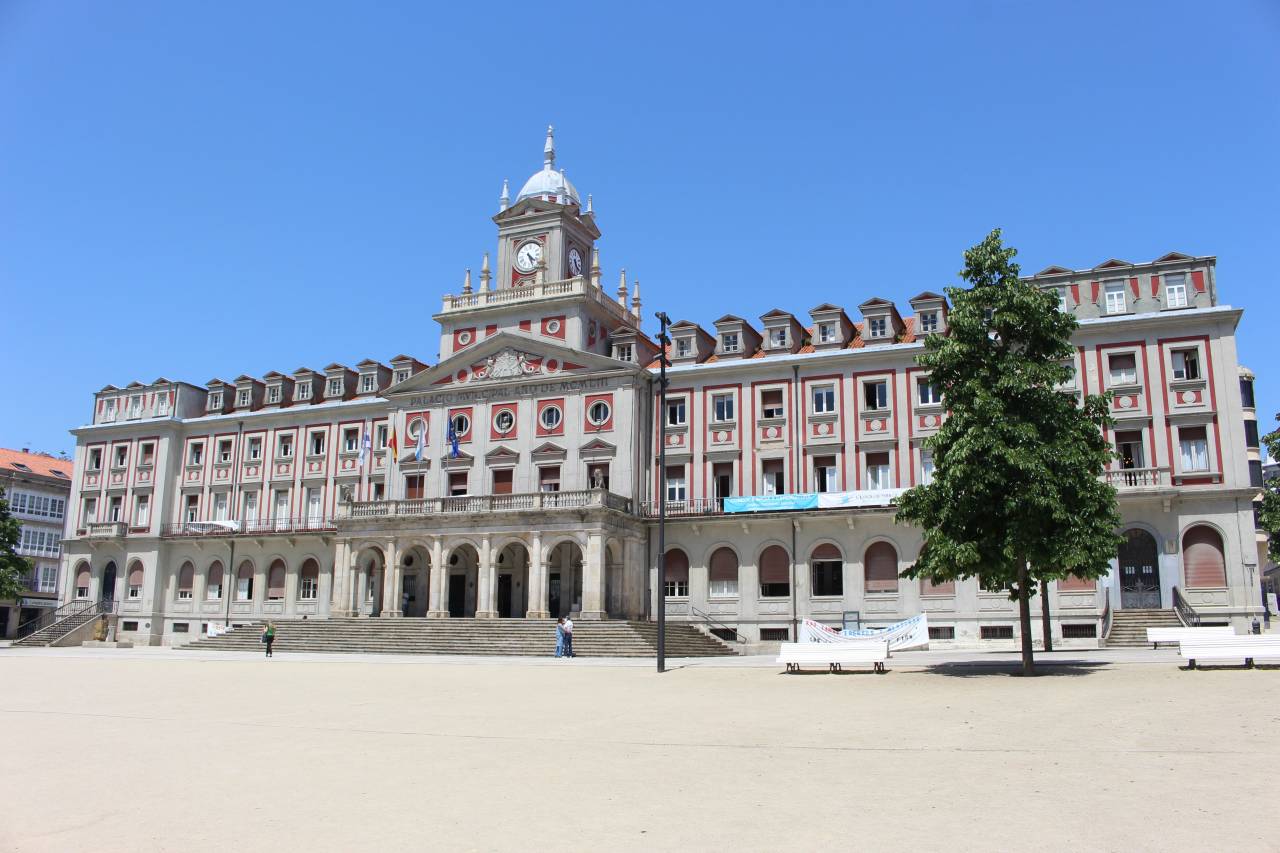Camino Inglés
The Camino Inglés (the English Way) was traditionally the route taken by English, Irish and Scandinavian pilgrims, as well as others coming from the north of Europe, who started their pilgrimage in their home countries, sailed to Ferrol or A Coruña, and completed the last stretch to Santiago de Compostela in Galicia.
Starting in Ferrol, this route is barely over a hundred kilometres long. Therefore, you need to collect two stamps every day right from the start in order to qualify for a compostela upon completing the route.
Places of interest along the Camino Inglés

Ferrol
Ferrol's distance from Santiago de Compostela, which is just over 100 kilometres, makes it an ideal starting point for a pilgrimage on foot, as having walked 100 kilometres is the modern requirement for getting a compostela.
Thanks to its sheltered location on the Atlantic coast, Ferrol has long been a town centred around shipbuilding. Today, there is still a naval base and a shipyard here, which you will walk past after starting the Camino Inglés.

Pontedeume
Pontedeume is inseparable from the Andrade family, who used to rule this area in the Middle Ages, and reminders of whom you will come across numerous times.
The Camino Inglés enters Pontedeume after crossing the river Eume, after which the town gets its name (Ponte do Eume simply meaning 'Bridge across the Eume'.)

Betanzos
Betanzos lies at the confluence of the Mandeo and Mendo rivers. Up until 1833, it was the capital of one of the seven provinces of the Kingdom of Galicia. Betanzos has a well preserved historical town centre, including parts of the medieval city walls, and three gates still standing. One of them, Porta da Ponte Vella, is the gate through which the Camino Inglés enters the town.

Santiago de Compostela
Santiago de Compostela is the capital of Galicia, and the final destination for hundreds of thousands of pilgrims every year walking one of the various caminos. Legend has it that the remains of the apostle St. James (Santiago, the patron saint of Spain) were brought here and are now preserved in the Cathedral.
